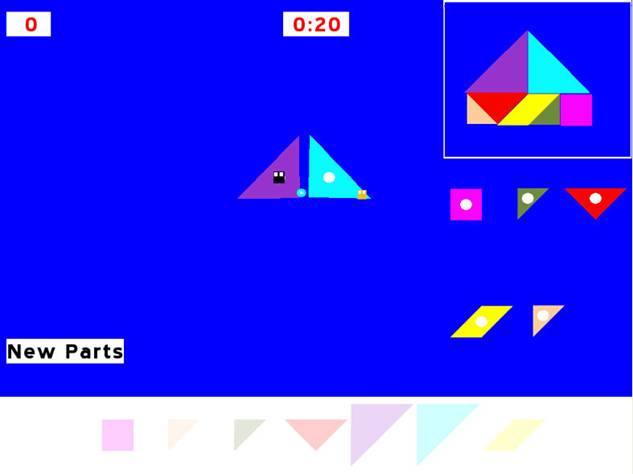Ellen Gurman Bard
Reader, Linguistics and English Language ,
School of Philosophy,
Psychology, and Language Sciences
Associate, Human
Communication Research Centre, School of Informatics

Tel: +44 131 651 1759


Ellen Gurman BardReader, Linguistics and English Language ,
School of Philosophy,
Psychology, and Language Sciences |
 |
||
| Email: ellen "at" ling "dot"
ed "dot" ac "dot" uk Tel: +44 131 651 1759 |
 |
 |
|
| EGB by Peter Graff | iCat by Phillips | Joint Construction Task screen (Carletta et al, 2010) | |
My work has two main themes which intersect on the higher level factors operating in the production and recognition of spoken words. The first theme has to do with the articulation and perception of the words, the second with the use that speakers make of models of listeners.
The articulation/perception work is inspired by the fact that running speech is acoustically under-determined: words are pronounced so differently in running speech from the way we expect them to sound in isolation that when electronically excerpted from recorded running speech, individual words are often not recognizable. Furthermore, under-determinacy varies inversely with other information that might help listeners to identify words -- previous mention of the named entity, presence of the named object in the immediate environment, predictability from sentence context. I am interested in the constraints which under-termination imposes on the psychological mechanisms behind our ability to recognize, understand, plan, and produce speech.
The work on listener modelling/audience design is related the first topic because Lindblom's (1990) hyper- and hypo-articulation theory is usually interpreted as a form of micro-scale audience design: speakers are supposed to adjust word articulation to suit the current needs of their listeners. Given everything we know about the time course of speech understanding and production, genuine full-service on-line modelling and application of others' knowledge would amount to an inspiring feat of mind-reading. The real research questions now are what information about listeners' knowledge and attention speakers actually do notice, how and when they use that information, and how we get the impression that they are using complex information, when some simpler process is actually at work.
Some of my work in this area was conducted within the
HCRC Dialogue Working Group and is based on
the Map Task Corpus of task-oriented dialogues. Working with
constrained
dialogues allows us to control what speakers and listeners know about
the
items under discussion and then lets us see which information affects
word
intelligibility. My research in this area deals with the effects of
shared
knowledge on clarity of pronunciation in spontaneous speech (with Anne
Anderson and Alison Newlands , Cathy Sotillo and Matthew Aylett),
phonological reductions in spontaneous speech (with
Cathy Sotillo, and Jan McAllister
Other work concerns restrictions on modularity in the recognition of running speech, the effects of the structure of the mental lexicon on lexical access (both with Richard Shillcock), the measurement of linguistic intuitions (with Antonella Sorace, Dan Robertson, and Cheryl Frenck-Mestre), the intelligibility of speech addressed to children (with Anne Anderson), spontaneous speech produced under sleep deprivation (with Anne Anderson, Cathy Sotillo, and Martin Taylor), and the phonological status of French initial accent (with Corine Astésano (Marie-Curie Fellow) and Alice Turk ).
Recent projects are the NSF-funded iMAP , Intelligent Map Task Agent (with Max Louwerse and Art Graesser in Memphis and Mark Steedman and Markus Guhe in Edinburgh), and EC Framework VI project JAST, Joint Action Science and Technology (with Jon Oberlander, Jean Carletta, Robin Hill, Craig Nicol, and Manabu Arai in Edinburgh, Jan Peter de Ruiter in Nijmegen, Mary Ellen Foster in Munich, and a host of others). The nervous cat at the top of this page actually tops a robot. Our task was to give the robot interestingly human characteristics by studying how people do things jointly. Our own work deals with reference and attention during joint work in delicate construction tasks. The screen at the top right of this page records one such task in progress.
Some of this work takes place in JEL, the Joint
Eye-Tracking Laboratory, funded by JAST and the College of Humanities
and Social Science. University of Edinburgh students who enjoy playing
computer games are invited to sign up through a link here when we next
call for participants.
I'm happy to supervise honours, MSc or PhD dissertations in any of the areas described above.
Psycholinguistics
Statistics and Experimental Design LASC10033, LASC11021
Foucart, A., Branigan, H., and Bard, E. G. (in press). Determiner selection in Romance languages: evidence from French. Journal of Experimental Psychology: Learning, Memory, and Cognition, doi: 10.1037/a0020432
Carletta, J., Hill, R.L., Nicol, C., Taylor, T., De Ruiter, J.P., and Bard, E.G. (2010) Eyetracking for two-person tasks with manipulation of a virtual world. Behavior Research Methods, 42(1), 254-265.
Bard, E. G., Frenck-Mestre, C., and Sorace, A. (2010). Processing auxiliary selection with Italian intransitive verbs. Linguistics, 48 (2), 348-361.
Astésano, C., Bard, E. G., and Turk, A. (2007). Structural influences on initial accent placement in French. Language and Speech, 50, 423-446.
Bard, E. G., Anderson, A. H., Chen, Y., Nicholson, H. B. M., Havard, C., and Dalzel-Job, S. (2007). Let’s you do that: Sharing the cognitive burdens of dialogue. Journal of Memory and Language, 57, 616-641.
Bard, E. G., and Aylett, M. (2005). Referential form, duration, and modelling the listener in spoken dialogue. In J. Trueswell and M. Tanenhaus (Eds.), Approaches to studying world-situated language use: Bridging the language-as-product and language-as-action traditions. Cambridge: MIT Press. Pp. 173-191.
Plemmenou, E., Bard, E. G., and Branigan, H. (2002). Grammatical gender in the production of single words: Some evidence from Greek. Brain and Language, 81 (1-3), 236-241.
Bard, E. G., Sotillo, C., Kelly, M. L., and Aylett, M. (2001). Taking the hit: Leaving some lexical competition to be resolved post-lexically. Language and Cognitive Processes, 16, 603-609.
Bard, E. G., Anderson, A. H., Sotillo, C., Aylett, M. Doherty-Sneddon, G., & Newlands, A. (2000). Controlling the intelligibility of referring expressions in dialogue. Journal of Memory and Language, 42 (1), 1-22.
